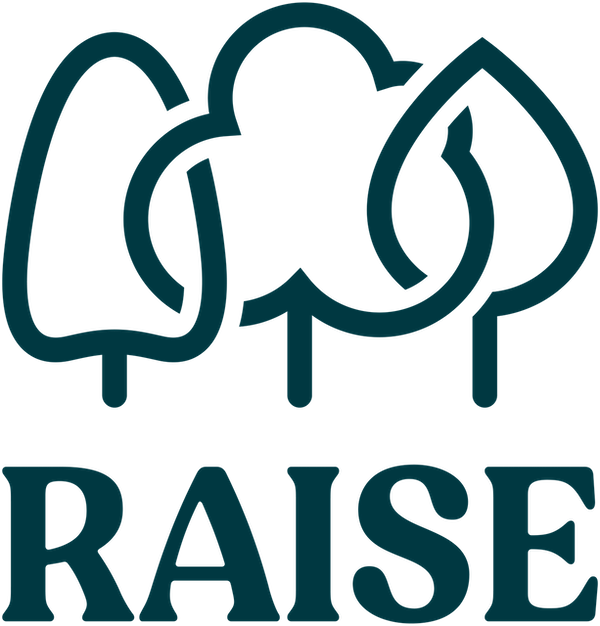Forest Plan / Evidence / Engagement Outcomes

Engagement Outcomes
This Forest Plan proposes an innovative, inclusive and deeply human approach to forestry. Cumbria’s landscapes are rich in natural beauty, yet access to these spaces has not always been equitable or inclusive. To explore, demonstrate and refine an engagement model, Raise completed an engagement pilot programme with communities across Cumbria.
Raise commissioned a programme of engagement work with four distinct Cumbrian communities across summer 2024, led by a consultant Producer [23]. The engagement process, illustrated in figure 14, used arts-led engagement practice to offer woodland activities to identified ‘communities of benefit’. We deliberately prioritised groups likely to experience barriers to woodland engagement and made links with local community organisations (which we refer to as ‘link organisations’) to reach these groups.
In each location, our consultant Producer worked with one or more artists and link organisations. The artist(s), with support from the link organisation(s), facilitated a programme of experiences for local people, both within existing woodlands and at sites identified for possible woodland creation nearby.
The artists used creative and practical processes to gather reflections from those taking part, guided by key questions posed by Raise to help shape this Forest Plan. For each pilot location, the artists consolidated these reflections into an overall response, together with the artworks created by the communities they worked with. Our consultant Producer brought these responses together to form an overall Community Manifesto and Guiding Principles for creating Cumbria Community Forest – along with specific recommendations for immediate action.
Figure 14: Elements of the engagement pilot programme

Figure 15: Still from 'Tree Waves' film created by Full of Noises, documenting their workshops with Autus group members in Barrow-In-Furness
Outcomes from Engagement
Through our pilot engagement programme in 2024 we have worked with local partners and diverse communities in Barrow, Cleator Moor, Maryport, and Carlisle. We have confirmed locally that woodlands offer far more than environmental benefits alone; they can be spaces of solace, creativity, and connection. We have also seen that access to these benefits is not evenly distributed. For some, woodlands are places of refuge and imagination, while for others, they are spaces fraught with anxiety and barriers.
Our pilot engagement work across these four distinct communities in Cumbria has provided deep insights into what woodlands mean to different people and how these spaces can be transformed into inclusive, welcoming environments.
In Barrow, autistic adults reflected on how childhood memories of exploration and imagination in woodlands were replaced by more constrained experiences as adults. The workshops reminded them of the magic woodlands can hold when constraints are lifted.
For participants in Cleator Moor, adults with learning and physical disabilities, being in the woods together fostered a sense of safety, accomplishment, and joy. The ability to explore at their own pace, with proper support, transformed the woodland into a place of connection and reconnection with others.
In Maryport, young people from the LGBTQ+ community expressed a duality in their relationship with woodlands - while they found peace and freedom, they also encountered feelings of isolation and fear. The woods, for them, could be both a sanctuary and a place of vulnerability, highlighting the need for careful consideration when designing these spaces to be truly inclusive.
In Carlisle, adults seeking asylum shared their cultural affinity with nature, where woodlands represented a link to their homelands at a time of extreme isolation. For them, the potential of a food forest at Cummersdale represented a useful skills development opportunity and would help cultivate a sense of purpose and belonging in a new land.

Figure 16: Photograph of Sneha Solanki's workshops with Tullie's Secret Garden group in Carlisle
Artworks
Explore the artwork and participant comments from Cumbrian communities via the links below. Figures 15, 16, 17 and 19 within this section show examples of the artworks created and processes documented during these pilot engagement workshops.
Barrow
Carlisle
Cleator Moor
Maryport
Drawing from these creative outputs and detailed practitioner reports, our consultant Producer compiled insights and recommendations, summarised in the next section.
They also developed our Community Manifesto which brings together the experiences, aspirations and demands of the participants in this pilot programme, in relation to Cumbria Community Forest.

Figure 17: Still from 'What does woodland mean to you' animation co-created by Alistair Debling and a workshop participant in Maryport
Recommendations
Our commissioned arts-led engagement pilot programme delivered recommendations for the delivery of community engagement across Cumbria Community Forest.
Acting upon these, Raise will establish a replicable model for engagement that centres the principles of:
inclusive, people-centred design of woodlands,
woodlands as sites of cultural integration,
a localised and networked approach and
creative and social engagement.
These principles are expanded in Figure 18 below:
Figure 18: Recommendations for Raise community engagement
Through our community engagement approach, we will create woodland spaces tailored to local communities. Our forest design will be conscious of the complex and at times inequitable relationships Cumbrians have with green spaces. Our aim is for all Cumbrians to find a sense of belonging and purpose in our woodland creation programme. The key to this lies in our commitment to co-creation: working with diverse communities and prioritising those who have historically been excluded from such spaces.

Figure 18: Pinhole photograph of workshop participants taken during Dominic Smith's workshop with West House in Cleator Moor
[23] John Coburn, Wild Museum https://www.wild-museum.com/who-we-are






